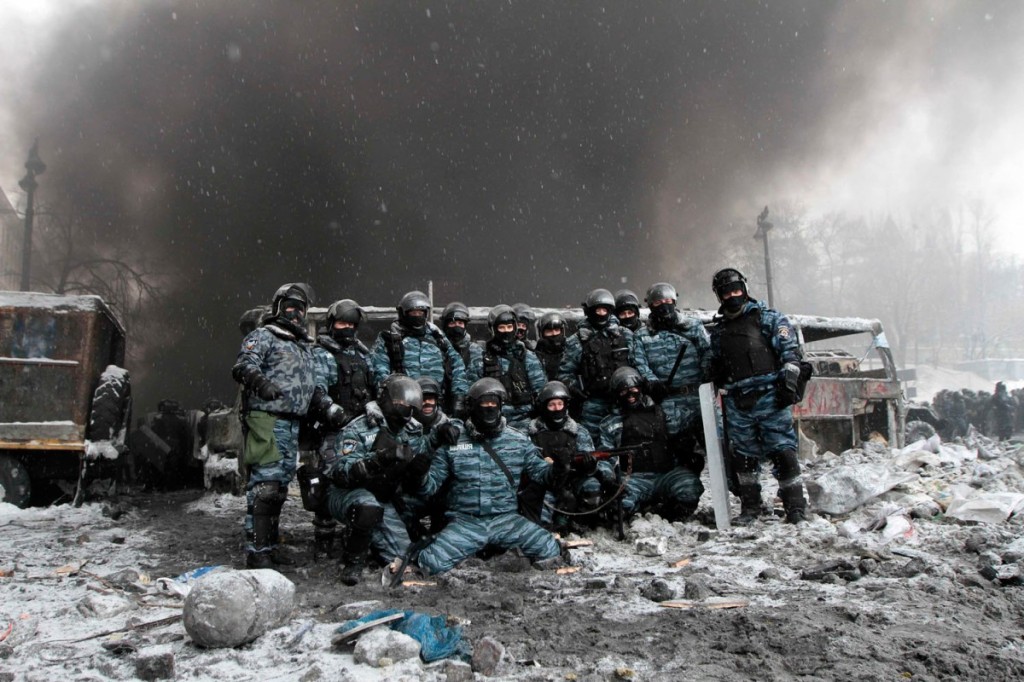The web is awash in images of the battle in Kiev’s Maidan Nezalezhnosti, i.e., The Square of Independence (see, e.g., recent collections of such images in photographic slideshows here, here, and here). On the one side are protestors calling for both the incorporation of the Ukraine into the EU and the resignation of Ukrainian President Yanukovych. On the other side are the Berkut, Ukraine’s special unit of riot police known for its brutal and intimidating practices of “crowd control.” Taken in their totality the images tell a story of protestors (or are they revolutionaries?) fighting with homemade weapons—most prominently slingshots, wooden sticks, hastily produced Molotov Cocktails, and burning tires … lots of burning tires—against a modern police force that looks like a cross between Medieval knights adorned with protective armour and shields and futuristic Robocops.
In many ways these images don’t look very different from protests and riots we are seeing (or have seen) in places like Bahrain or Cairo or Myanmar, though that is no reason to ignore them. Indeed it may well warrant our careful attention as protests around the world seem to be no different than one another, and particularly so as the full force of state power is being brought against those demanding democratic rights. What caught my attention here, however, were not the images of bleeding protestors or burning tires or images of the night sky lit up in hues of greens and blues and oranges by fireworks released by protestors and aimed at the riot police, but the image above of a Berkut unit posing for a group photograph against the backdrop of burnt vehicles and a smoke filled sky.
On the face of it the photograph is altogether banal and uninteresting. It is obviously choreoraphed and posed for the camera. One might think of the ritualistic class or team picture, or perhaps a formal portrait of one’s extended family. The only thing missing is the prankster who holds rabbit ears behind someone’s head to spoil the image for everyone else.
Such photographs have their place in yearbooks and family photo albums as they mark an “I was there” sentiment or perhaps call our attention in some small way to the existence of certain social or group formations. But of course here there is a difference, for the photograph is not being taken in an empty gymnasium or classroom, or in a studio, but in what might reasonably be characterized as a “war zone,” with the war continuing to rage. In short, it is the photograph’s generic banality that makes it stand out from all of the other images of violence and disorder—of rage and carnage—that characterize the Kiev riots because it is so terribly out of place. And so the question has to be, why was it taken—and now? And why has it shown up in more than a few of the online slideshows? And perhaps most important, how will it be used to craft collective memories of this “event,” to animate or solidify models of civic life, and to serve as a figural resource for subsequent communicative action?
There are no obvious or immediate answers to these questions and it may be enough—at least initially—that we simply acknowledge the apparent incongruity between the pose of the Berkut and the scene in which they are posed and to raise the subject for more careful consideration. But that said, it is really quite hard not to notice the arrogance, if not the very impropriety, of the civic performance that the photograph records. Perhaps that was why the photograph was taken after all.
Photo Credit: Stringer/Reuters

Discussion